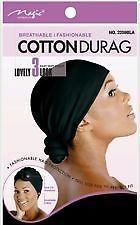
To the Editor:
I try to attend the Board of School Committee meetings “whenever my schedule allows,” which means, “when I’m not working.” Fortunately, it means I can attend many – whether in person or online.
At the board meeting on Monday, January 28, we had the pleasure of being able to listen to some student perspectives. I believe that it is important to give these testimonies the full weight they deserve.
One student advocated for a change to the hair-covering policy*: that students be allowed to wear them when they are indoors. She mentioned that “durags” are frequently associated with gangs, however, this isn’t the case in reality. They are worn to keep the hair neatly pulled back.
“White privilege” is when you see society with blinders on, and expect that others’ experiences are like your own. People exhorting such privilege will fail to take into account what other populations live every day. They will suppress their testimonies using cognitive dissonance, so that they don’t have to change their stereotypical beliefs.
I was disappointed to hear some board members not championing for the student. She is the one who lives in the student culture on a daily basis. If anyone knows what durags stand for, she does. We should believe her without question.

I was further disappointed when I was on social media the next day and found people discussing this matter using sarcastic statements such as, “we are criminalizing black and latino students by not allowing them” followed by “you just can’t make this stuff up.”
As a community, it is OUR JOB to advocate for the well-being of the students. This includes minorities. We tell the students that we want what’s best – they tell us what is best – and this is the reaction that it elicits? Why are people not immediately taking this student’s side?
If we want to promote an optimal learning environment, we have to make the place a “safe space” for learning. This means taking down any emotional barriers. When children feel love and acceptance, they are more ripe and ready to learn. When they feel that society is against them no matter what they do or wear, they will shut down. This doesn’t advocate for their success.
This matter isn’t about the “durags” when it all boils down. It’s about if we unconditionally accept our students for who they are as individuals. Consider what it looks like to play that out. It means letting them wear the durags.
*In case anyone feels the student is incorrect in her statement of the purpose of durags and their role in keeping hair neat: look no further than the New York Times: This shows that the student is verifiably correct.
Candace Moulton
Manchester, NH







